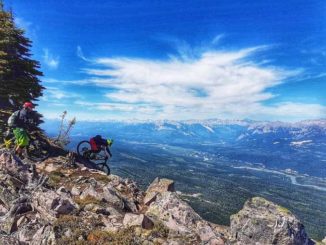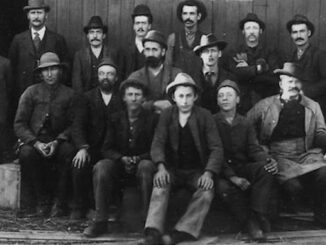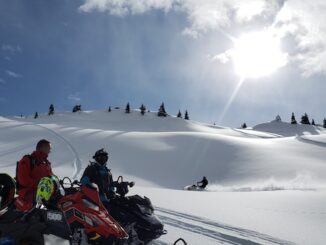For those of you that have been following this series, you’ll likely remember a story I posted back in November that detailed the work of Rescue Specialists with Kananaskis Public Safety (KPS). For that piece I interviewed Jeff MacPherson, who had just wrapped his inaugural summer with that rescue agency. Since KPS is a seasonal position for him, Jeff reverts back to life as a heli-ski guide during the winter months. I was able to chat with Jeff again for this profile about what the career of a heli-ski guide entails.
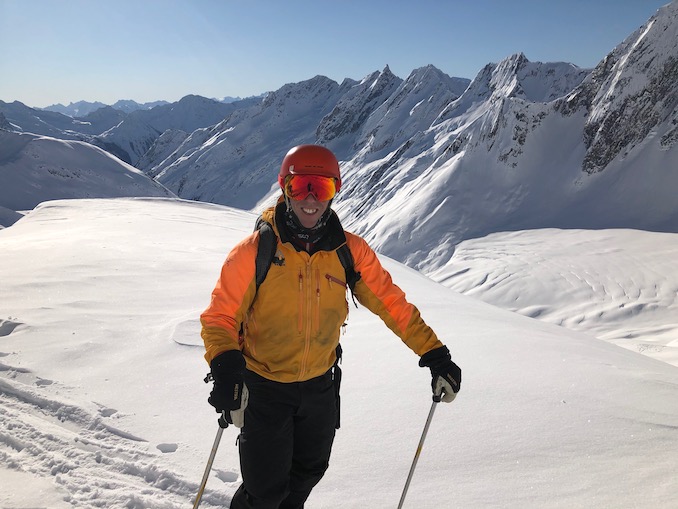
For the past twelve years he’s been employed by Canadian Mountain Holidays (CMH) and prior to that he worked with various other ski-touring operations. Currently, Jeff enjoys a two-weeks-on and two-weeks-off schedule, which allows him a great work/family balance and also affords him the time to answer even more of my questions.
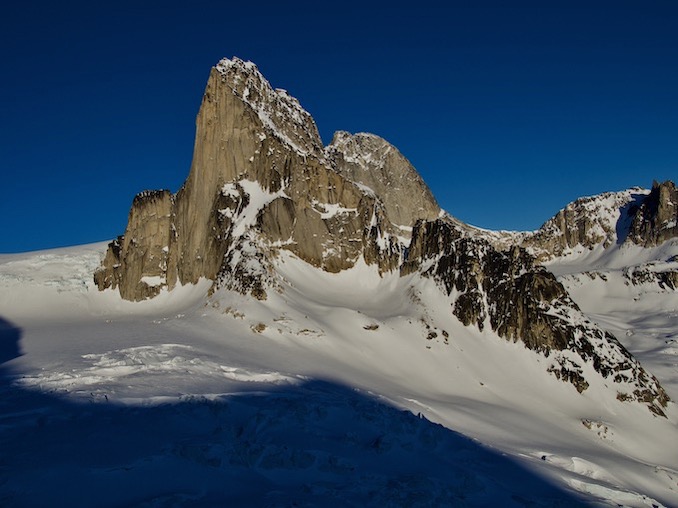
CMH was founded in 1957 by Johann Wolfgang “Hans” Gmoser, one of the most decorated individuals in Canadian mountaineering history. Hans made his mark in heli-skiing at CMH and the company now features the tagline, “we invented heli-skiing.” CMH is both the largest and oldest heli operation in the world and boasts a private claim to three-million acres of pristine wilderness just waiting to be explored. CMH employs a team of highly experienced and professional guides that are well-trained in keeping guests safe, as well as well-versed in making your vacation one you’ll remember for years to come.
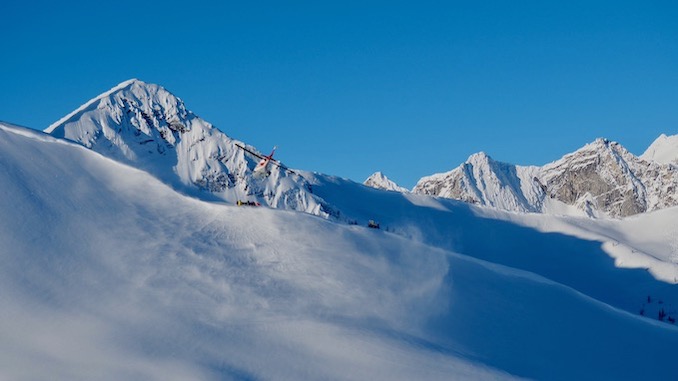
What follows is an in-depth look at the work of a heli-ski guide as told to me by a veteran of the industry.
Calgary Guardian: “Which CMG lodge are you based out of, or do you work at all of them?”
Jeff MacPherson: “I have worked at many of the CMH lodges, but for the last bunch of years I have been working in the Bugaboos full time.”
CG: “What’s the best thing about being a heli-ski guide?”
JM: “It is hard to describe the best thing about being a heli-guide. I would have to say the best thing is having the privilege to ski in some of the most beautiful places in the world, and to share that experience with guests from around the globe.”

CG: “What’s the hardest part of your job with CMH?”
JM: “Just dealing with conditions when they get tricky. It could be bad weather or avalanche instability. Sometimes there are hard days where you are trying to give forty guests the best experience possible and at the same time ensure the safest program possible.”
CG: “Other than being an expert skier, are the certifications/trainings/education different from your summer job with Kananaskis Public Safety?”
JM: “Both jobs require similar certifications. Ski guide or mountain guide as certified by the ACMG or IFMGA, advanced first aid, along with professional avalanche training though the Canadian Avalanche Association.”
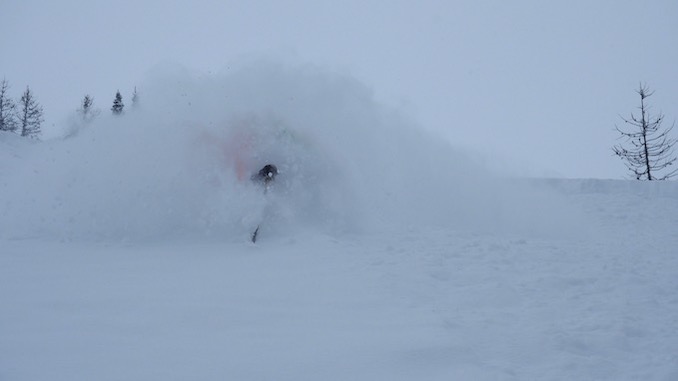
CG: “Let’s take a virtual look inside your pack. What are the essentials you have with you every time you’re out with clients?”
JM: “Shovel, probe, and bush saw are the essentials for me. I also have a a first aid kit, a guide’s tarp that can be used as a shelter or an emergency toboggan, lightweight rope and lightweight rescue gear, spare gloves, light jacket, small snow study kit, lighter, a few extra snacks, and a radio and/or another emergency communication device. Depending on the weather and ski plans, I will add a few things or take a few thing out, but the goal is to keep the pack light and still carry all the essential tools.”
CG: “And of course avalanche transceivers are worn on the body, not in your pack.”
JM: “Yes, of course.”
CG: “Heli-skiing is an inherently dangerous activity. How do you mitigate risks for your guests?”
JM: “There is a lot that goes into mitigating the risk. It starts with a guide’s meeting in the morning before breakfast. We will look at weather and weather changes. We will talk about the snowpack and what might have changed during the night. After that, we as a team go through the run list, where we decide what runs will be green-lit for skiing and which ones will be closed for the day. These decisions are made in relation to the avalanche forecasts and the weather. Once we have completed the process of going through the more than one hundred runs that we have available, we will make a plan of where we would like to ski for the day.”
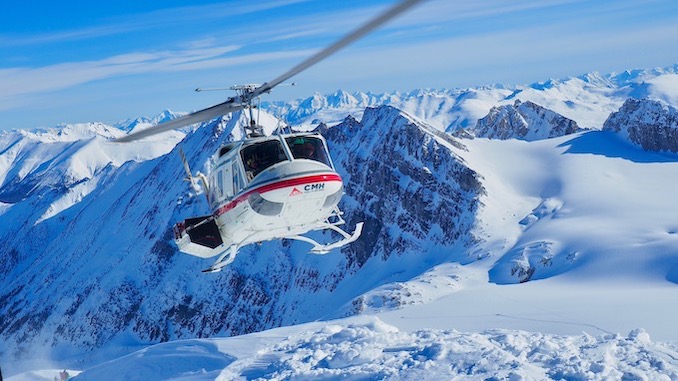
CG: “As someone who hasn’t had the pleasure of enjoying heli-skiing (yet) could you walk me through what a typical day might look like for you?”
JM: “The guide’s meeting usually runs from 7:15 to 8:00am, followed by breakfast. The first group will fly out for their initial run around 9:00am. We will ski until about 11:00am, at which point the helicopter will get fuel, giving us a short break. We’re back on our skis until 1:00pm and then have lunch out in the field. We continue skiing until the end of the day. Once we’re back at the lodge there’s another guide’s meeting at 6:15pm and then dinner with the guests at 7:00pm. After that we’re done, until we do it all over again the next day! As you can see, the day’s are pretty full.”
CG: “I think I might know the answer to this, but is there such a thing as too much snow?”
JM: “Surprisingly yes, there is the odd occasion where we get too much snow. Generally with that the avalanche instability is high so we can’t ski steep enough terrain to get through the snow. This amount of snow is rare, but it does happen. The nice thing is that it will settle quite quickly and then make for excellent skiing.”
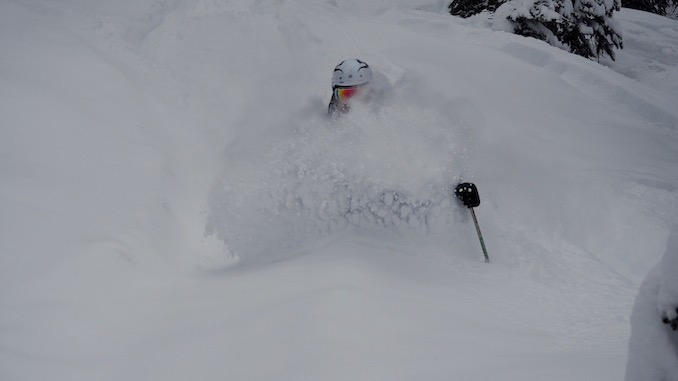
CG: “Do you have a favourite area to ski? If so, where and what makes it so special?”
JM: “I am a bit biased to that one, but skiing in the Bugaboos is truly spectacular. We have a great variety of terrain from steep trees to big open glaciers and the scenery is out of this world.”
CG: “What separates CMH from the other heli-ski operations out there? Why should I choose CMH?”
JM: “CMH it is the biggest heli-skiing company in the world and was also the first heli-skiing company in the world. We have eleven different lodges to work and ski at. At CMH safety is the number one concern. CMH provides amazing training and support to create both a great and safe experience for staff and guests alike. Working for CMH is like working with a big family. There are many reasons to choose CMH. As mentioned, safety is our umber one priority and in this industry that is very important. Alpine Helicopters is the company that provides the machines, the pilots, and the engineers. They have been working with CMH for many years and they are a great company to work with. CMH has the variety in lodges and each one offers a different skiing experience, but they are all similar in that they provide great skiing and a fun holiday, coupled with great food, accommodation, and people. From the time you arrive at the airport until the moment you’re leaving, guests feel taken care of and can just focus on a great mountain skiing experience. Coming to CMH is is a true world class holiday.”
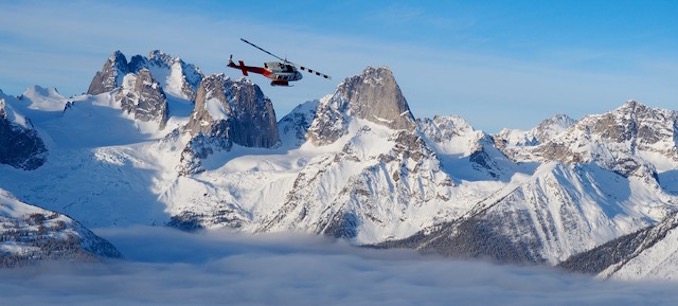
CG: “I am assuming heli-ski guide jobs are in high demand. What advice could you give to anyone looking to break into the industry?”
JM: “The industry is growing at a steady pace and it seems there is no shortage of work for ski guides these days. Along with the guide’s training, having some ski instruction skills is very valuable.”
I would like to take this opportunity to thank Jeff, again, for his patience and expertise while I attempted to learn the inner-workings of his two career choices. I found this process very interesting, so I am hoping you learned something new about the heli-guiding industry as well.

To book your next heli-ski adventure, or just to stay connected with CMH, please visit their website or follow their social channels on Instagram, Facebook, Twitter, and YouTube.
For related stories, please see my previous Wild Jobs posts on Helicopter Pilots and Mountain Safety Teams.
***
About this column:
Wild Jobs is a running series that focuses on people in outdoor-related professions. It provides a brief snapshot of their career and the duties that it entails. Please see my previous post, Wild Jobs: Avalanche Forecaster to learn more.


